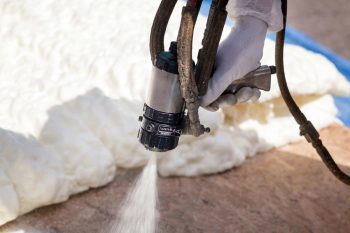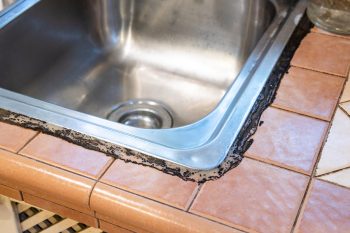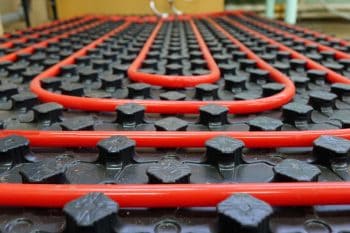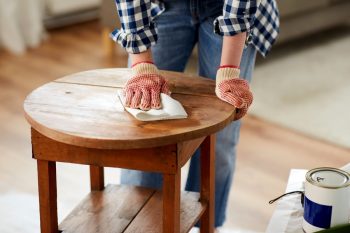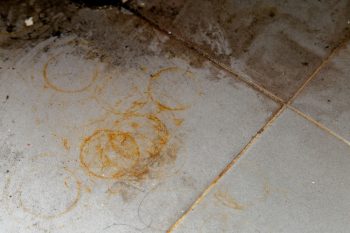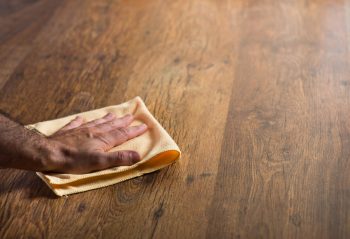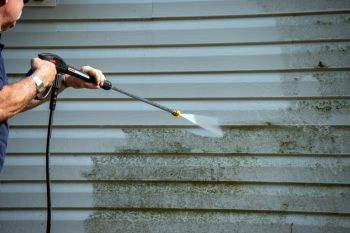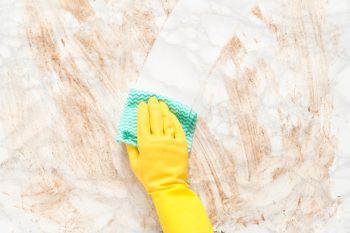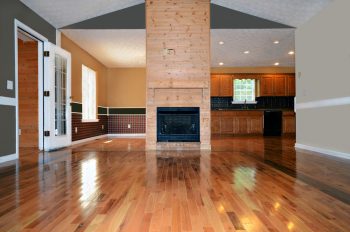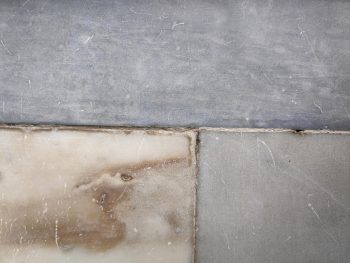
While we clean the insides of our homes regularly, it’s easy to ignore the outside elements of our homes.
But if you’ve noticed concrete blocks that are part of a retaining wall, ornamental landscaping, or your home’s foundation covered in dirt and grime, you may want to clean them.
Follow the instructions in this article, and we’ll have your concrete blocks looking as good as new.
Dirt, clay, water stains, soot, and algae can all mar the surface of the concrete, making it look dingy and tired. Concrete is a popular building material, but dirt can spoil its beauty.
This article will examine four methods of cleaning concrete, working from the least aggressive options to more abrasive techniques.
It’s a good idea to start with the gentler options before trying something more abrasive.
They cost less money and will have no long-term impact on your concrete (other than making the blocks look clean for years to come).
The four methods of cleaning concrete are:
- A stiff-bristled brush and no water. This is the simplest way to clean concrete.
- If a stiff-bristled brush doesn’t remove the staining, it’s time to add water and a cleaning solution.
- If the stains persist, power washing is an option.
- Concrete blocks can be cleaned abrasively if none of the prior options worked for you. Abrasive cleaning is almost always done using a sandblaster.
Safety is key, so we’ll look at what safety gear you need for each cleaning option.
You can even improve the durability of your concrete by applying sealer or stain after you’ve cleaned it.
Boost your home’s curb appeal by tackling unsightly staining on your property’s concrete blocks. It’s a relatively easy chore that will leave you wondering why you put off cleaning them for so long.
Why Choose Concrete
Concrete is one of the most popular building materials in the world. It’s attractive and long-lasting.
Concrete blocks are strong structural building materials and work great for exterior landscaping (like for retaining walls).
In addition, concrete blocks are fire-resistant and sound-deadening. They are low maintenance – but not no maintenance. Periodic cleaning is necessary to keep your blocks looking as spiffy as the day they were laid.
Let’s look at the four best methods to remove dirt, water stains, soot, and algae from your beautiful concrete block.
4 Ways To Clean Concrete Blocks
Roll up your sleeves – it’s time to get to work. Your home will be the envy of the neighborhood when you’re done scrubbing those concrete blocks.
Following proper safety, protocols is always a wise decision. Safety goggles keep any debris you scrub from the blocks out of your eyes if you’re working above your head.
When using detergent, make sure you wear gloves to protect your hands.
If sandblasting your concrete blocks, wear a respirator, protective clothing, and safety goggles.
1. Use a Stiff Brush
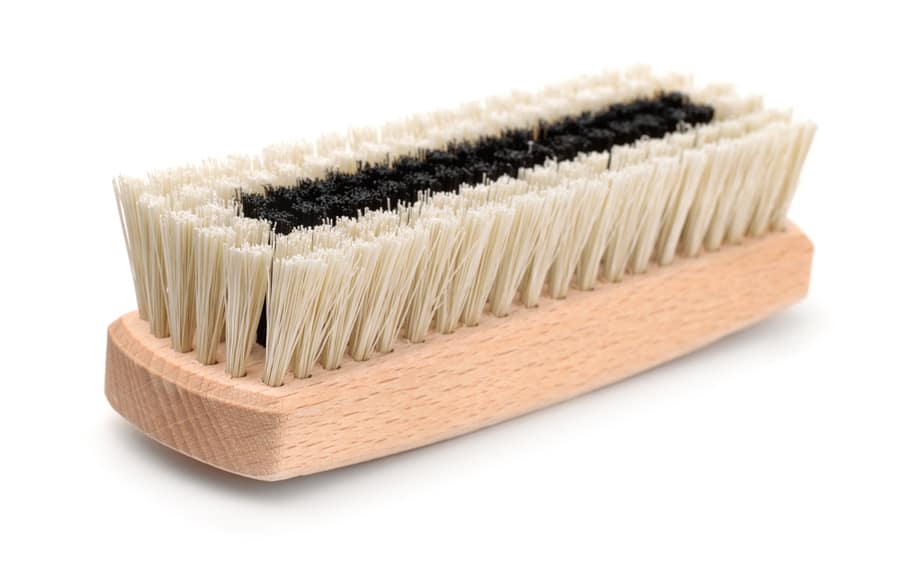
This is the least aggressive option for cleaning cement blocks. You’ll need a stiff brush (not metal, grab something made with nylon or another stiff fiber) and a can-do attitude.
Using a stiff brush to clean concrete is a great first choice because it won’t alter the appearance of the concrete. However, it may not be ideal for large areas because of the amount of work involved.
To clean the blocks, start scrubbing. The dirt and grime should start falling off. Re-scrub any areas that aren’t thoroughly cleaned as necessary.
When cleaning anything, it’s best to work from high to low. If you work from low to high, debris from higher areas can fall on lower areas that you’ve already completed, and you’ll have more scrubbing in the future.
When done, rinse the concrete with water from a hose fitted with a nozzle. Voilá. You’ve cleaned your cement blocks.
2. Use a Mild Cleanser and Scrub With a Brush

Your cleaner can be as mild as soapy water mixed in a bucket.
Premixed cleaners are also available, such as Scott’s Outdoor Cleaner + Oxyclean. TSP is another great option that’s been around forever. If you choose to use a concentrated cleaner, dilute it first.
Check the instructions on the cleaning solution you choose to use. If it’s harmful to plants or grasses, and you have some in the area you’ll be working, take the time to cover your vegetation with plastic.
Pick up any plastic when your job is complete, taking care to let the cleaner run off onto a safe location.
Again, your brush shouldn’t be metal. You’ll want a brush with nylon or other stiff synthetic bristles.
The first step is to apply your cleaner, either by spraying it on or dunking your brush in the bucket of cleaning solution. Next, you’ll need to get to work – start scrubbing at that dirt!
Make sure you’re wearing gloves to keep your hands clean.
Work from top to down, and repeat scrubbing until all the debris is removed. You may have to scrub problematic areas multiple times.
One advantage of using a mild chemical or cleanser is that your entire wall surface will look uniform. It’s a consistent way of cleaning concrete blocks.
Once you’ve removed all dirt, rinse the cleaner off with water. You can use a hose with a nozzle or dump some buckets of water on the area you’ve cleaned.
3. Power Wash Your Concrete
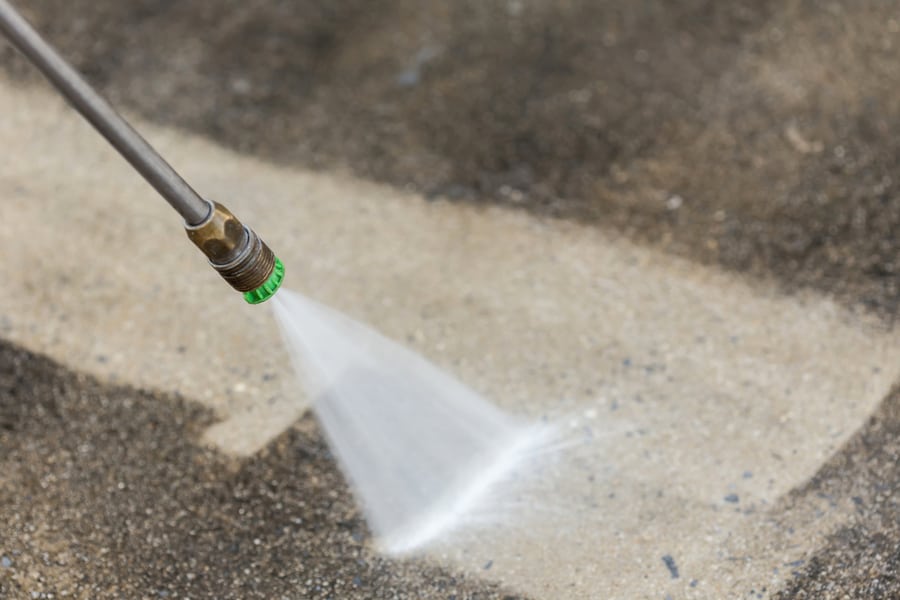
Okay, we’re calling in some big guns now. You’ll need to own, borrow, or rent a power washer. Using a power washer is a great way to clean concrete blocks if you have access to one and a large area that needs cleaning.
One downside of using a power washer is that it can leave marks, making the cleaning job look inconsistent and not uniform.
Once again, work from high to low. Try cleaning the blocks with the power washer set to the lowest possible PSI to prevent damaging the concrete. The maximum pressure you should attempt to use is 600 PSI.
Hold the wand of the washer a minimum of 12″ from the area you spray. Use two hands and aim the spray of water at the concrete, working back and forth until the dirt is dislodged.
Power washers can also damage ornamental concrete, particularly when used at a higher PSI, so testing an inconspicuous location is always advised.
Using a power washer, you can apply some cleaner to the concrete block. Make sure to rinse it off thoroughly with warm water once the job is complete.
4. Try Abrasive Cleaning
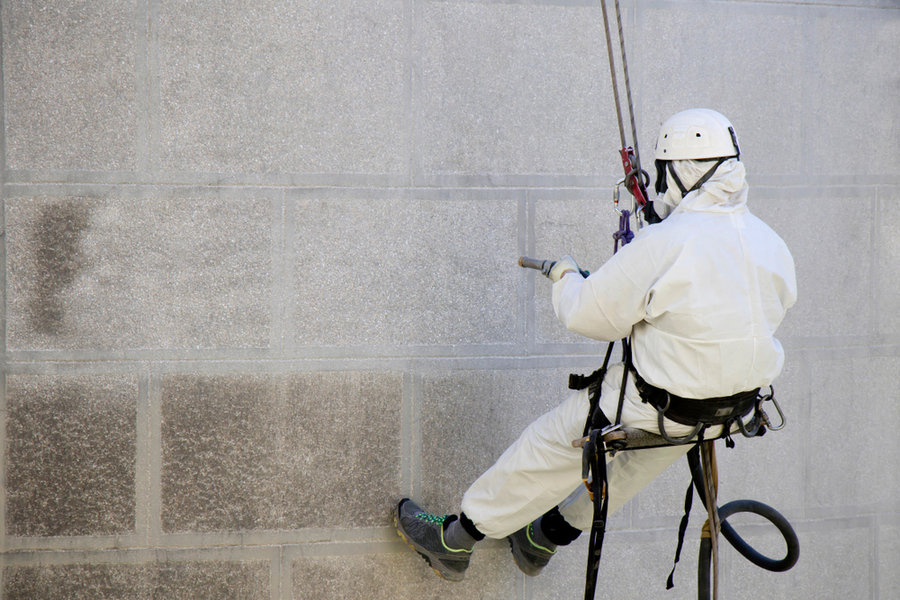
We’ve reached the biggest gun of them all – abrasive cleaning. If none of the other methods worked to clean your concrete block, abrasive cleaning is sure to get the job done.
It will remove a concrete surface layer, so be cautious when going the abrasive route.
While grinders and other tools can be used, sandblasting is the most common and efficient technique for cleaning concrete. It will leave the surface looking consistent and uniform.
Another plus is that sandblasting can be done in cold weather.
Make sure you use care, working from high to low. Sandblasting can change concrete’s appearance, durability, and even its water-tightness. If sandblasting is beyond your skill set, hire a professional to sandblast for you.
You’ll need to wear appropriate protective clothing like a coverall. A respirator is also a must.
Keep in mind that sandblasting will remove any surface coatings. Any stains or sealers will need to be reapplied.
Keep Your Concrete Block Clean
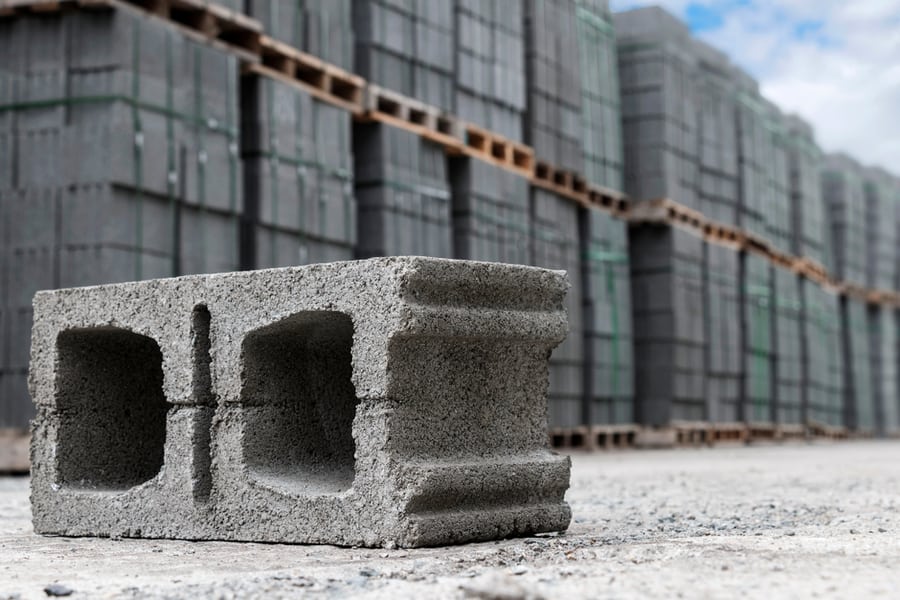
If you’re interested in applying a sealer or stain to extend the longevity of your concrete, now that it’s clean is the perfect time to do so.
Apply any stains or sealers following the manufacturer’s instructions, and ensure you wear appropriate safety equipment.
Stains and sealers can keep your concrete looking good for decades, but they may require additional coats eventually. Read the label on the stain or sealer of your choice and reapply when instructed.
Clean It Up
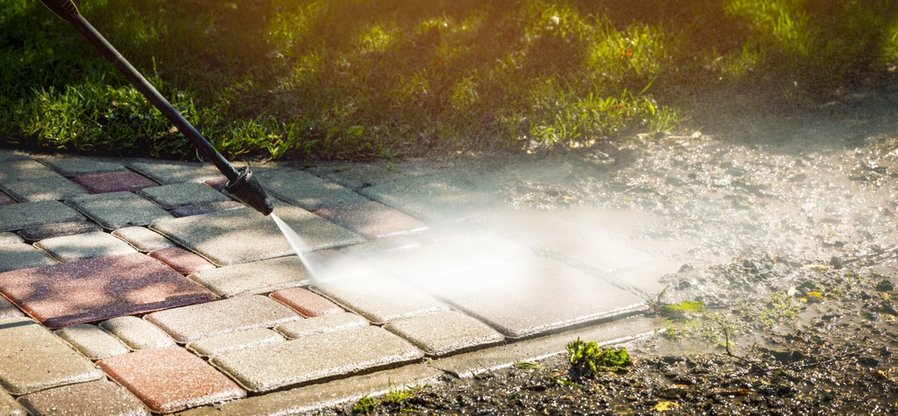
Rejuvenate your home by cleaning any dirty concrete blocks. It’s a simple chore that likely requires minimal equipment, and the satisfaction of cleaning off decades of grime and dirt will leave you a proud homeowner.
Try the methods listed in this article, from the least aggressive technique to sandblasting, if necessary. First, try a stiff brush, then some cleaner, a power washer, and a sandblaster when all else fails.
Clean your concrete safely by wearing appropriate safety gear, and consider keeping it looking good for decades by applying a stain or sealer once you’ve cleaned it.
